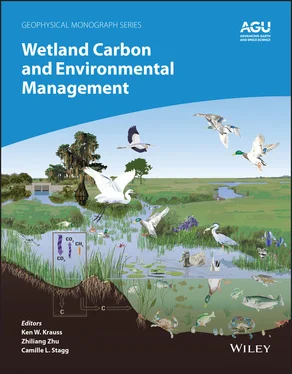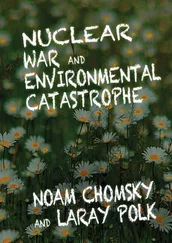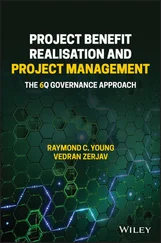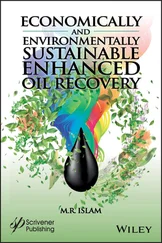211 Jutras, S., Plamondon, A. P., Hökkä, H., & Bégin, J. (2006). Water table changes following precommercial thinning on post‐harvest drained wetlands. Forest Ecology and Management, 235(1–3), 252–259. https://doi.org/10.1016/j.foreco.2006.08.335
212 Kadlec, R. H., & Reddy, K. R. (2001). Temperature effects in treatment wetlands. Water Environment Research, 73(5), 543–557. https://doi.org/10.2175/106143001X139614
213 Kaiser, K., & Guggenberger, G. (2000). The role of DOM sorption to mineral surfaces in the preservation of organic matter in soils. Organic Geochemistry, 31(7–8), 711–725. https://doi.org/10.1016/S0146‐6380(00)00046‐2
214 Kammann, C., Hepp, S., Lenhart, K., & Müller, C. (2009). Stimulation of methane consumption by endogenous CH4 production in aerobic grassland soil. Soil Biology and Biochemistry, 41(3), 622–629. https://doi.org/10.1016/j.soilbio.2008.12.025
215 Kang, H., Kim, S. Y., Fenner, N., & Freeman, C. (2005). Shifts of soil enzyme activities in wetlands exposed to elevated CO2. Science of the Total Environment, 337(1–3), 207–212. https://doi.org/10.1016/j.scitotenv.2004.06.015
216 Kao‐Kniffin, J., Freyre, D. S., & Balser, T. C. (2010). Methane dynamics across wetland plant species. Aquatic Botany, 93(2), 107–113. https://doi.org/10.1016/j.aquabot.2010.03.009
217 Kauffman, J. B., Heider, C., Norfolk, J., & Payton, F. (2014). Carbon stocks of intact mangroves and carbon emissions arising from their conversion in the Dominican Republic. Ecological Applications, 24(3), 518–527. https://doi.org/10.1890/13‐0640.1
218 Keil, R. G., Montluçon, D. B., Prahl, F. G., & Hedges, J. I. (1994). Sorptive preservation of labile organic matter in marine sediments. Nature, 370, 549–552. https://doi.org/doi.org/10.1038/370549a0
219 Keiluweit, M., Nico, P. S., Kleber, M., & Fendorf, S. (2016). Are oxygen limitations under recognized regulators of organic carbon turnover in upland soils? Biogeochemistry, 127(2–3), 157–171. https://doi.org/10.1007/s10533‐015‐0180‐6
220 Keller, J. K., & Bridgham, S. D. (2007). Pathways of anaerobic carbon cycling across an ombrotrophic‐minerotrophic peatland gradient. Limnology and Oceanography, 52(1), 96–107. https://doi.org/10.4319/lo.2007.52.1.0096
221 Keller, J. K., Bridgham, S. D., Chapin, C. T., & Iversen, C. M. (2005). Limited effects of six years of fertilization on carbon mineralization dynamics in a Minnesota fen. Soil Biology and Biochemistry, 37(6), 1197–1204. https://doi.org/10.1016/j.soilbio.2004.11.018
222 Keller, J. K., Wolf, A. A., Weisenhorn, P. B., Drake, B. G., & Megonigal, J. P. (2009). Elevated CO2 affects porewater chemistry in a brackish marsh. Biogeochemistry, 96, 101–117. https://doi.org/10.1007/s10533‐009‐9347‐3
223 Keller, J. K., Weisenhorn, P. B., & Megonigal, J. P. (2009). Humic acids as electron acceptors in wetland decomposition. Soil Biology and Biochemistry, 41(7), 1518–1522. https://doi.org/10.1016/j.soilbio.2009.04.008
224 Keppler, F., Hamilton, J. T. G., Braß, M., & Röckmann, T. (2006). Methane emissions from terrestrial plants under aerobic conditions. Nature, 439, 187–191. https://doi.org/10.1038/nature04420
225 Keuskamp, J. A., Hefting, M. M., Dingemans, B. J. J., Verhoeven, J. T. A., & Feller, I. C. (2015). Effects of nutrient enrichment on mangrove leaf litter decomposition. Science of the Total Environment, 508, 402–410. https://doi.org/10.1016/j.scitotenv.2014.11.092
226 Khan, H., & Brush, G. S. (1994). Nutrient and metal accumulation in a freshwater tidal marsh. Estuaries, 17(2), 345–360. https://doi.org/10.2307/1352668
227 Kim, S. Y., Veraart, A. J., Meima‐Franke, M., & Bodelier, P. L. E. (2015). Combined effects of carbon, nitrogen and phosphorus on CH4 production and denitrification in wetland sediments. Geoderma, 259–260, 354–361. https://doi.org/10.1016/j.geoderma.2015.03.015
228 Kitti, H., Forbes, B. C., & Oksanen, J. (2009). Long‐ and short‐term effects of reindeer grazing on tundra wetland vegetation. Polar Biology, 32(2), 253–261. https://doi.org/10.1007/s00300‐008‐0526‐9
229 Kleber, M., Sollins, P., & Sutton, R. (2007). A conceptual model of organo‐mineral interactions in soils: Self‐assembly of organic molecular fragments into zonal structures on mineral surfaces. Biogeochemistry, 85(1), 9–24. https://doi.org/10.1007/s10533‐007‐9103‐5
230 Klemedtsson, L., Von Arnold, K., Weslien, P., & Gundersen, P. (2005). Soil CN ratio as a scalar parameter to predict nitrous oxide emissions. Global Change Biology, 11(7), 1142–1147. https://doi.org/10.1111/j.1365‐2486.2005.00973.x
231 Klopatek, J. M. (1988). Some thoughts on using a landscape framework to address cumulative impacts on wetland food chain support. Environmental Management, 12(5), 703–711. https://doi.org/10.1007/BF01867547
232 Knicker, H., Scaroni, A. W., & Hatcher, P. G. (1996). 13C and 15N NMR spectroscopic investigation on the formation of fossil algal residues. Organic Geochemistry, 24(6–7), 661–669. https://doi.org/10.1016/0146‐6380(96)00057‐5
233 Knittel, K., & Boetius, A. (2009). Anaerobic oxidation of methane: Progress with an unknown process. Annual Review of Microbiology, 63(1), 311–334. https://doi.org/10.1146/annurev.micro.61.080706.093130
234 Knorr, K. H. (2013). DOC‐dynamics in a small headwater catchment as driven by redox fluctuations and hydrological flow paths – Are DOC exports mediated by iron reduction/oxidation cycles? Biogeosciences, 10(2), 891–904. https://doi.org/10.5194/bg‐10‐891‐2013
235 Knox, S. H., Sturtevant, C., Matthes, J. H., Koteen, L., Verfaillie, J., & Baldocchi, D. (2015). Agricultural peatland restoration: Effects of land‐use change on greenhouse gas (CO2 and CH4) fluxes in the Sacramento‐San Joaquin Delta. Global Change Biology, 21(2), 750–765. https://doi.org/10.1111/gcb.12745
236 Kögel‐Knabner, I. (2002). The macromolecular organic composition of plant and microbial residues as inputs to soil organic matter. Soil Biology and Biochemistry, 34, 139–162. https://doi.org/10.1016/S0038‐0717(01)00158‐4
237 Kon, K., Hoshino, Y., Kanou, K., Okazaki, D., Nakayama, S., & Kohno, H. (2012). Importance of allochthonous material in benthic macrofaunal community functioning in estuarine salt marshes. Estuarine, Coastal and Shelf Science, 96(1), 236–244. https://doi.org/10.1016/j.ecss.2011.11.015
238 Korrensalo, A., Mehtätalo, L., Alekseychik, P., Uljas, S., Mammarella, I., Vesala, T., & Tuittila, E.‐S. (2020). Varying vegetation composition, respiration and photosynthesis decrease temporal variability of the CO2 sink in a boreal bog. Ecosystems, 23, 842–858. https://doi.org/10.1007/s10021‐019‐00434‐1
239 Kostka, J. E., Roychoudhury, A., & van Cappellen, P. (2002). Rates and controls of anaerobic microbial respiration across spatial and temporal gradients in saltmarsh sediments. Biogeochemistry, 60, 49–76. https://doi.org/10.1023/A:1016525216426
240 Kreutzweiser, D. P., Hazlett, P. W., & Gunn, J. M. (2008). Logging impacts on the biogeochemistry of boreal forest soils and nutrient export to aquatic systems: A review. Environmental Reviews, 16, 157–179. https://doi.org/10.1139/A08‐006
241 Kristensen, E., & Holmer, M. (2001). Decomposition of plant materials in marine sediment exposed to different electron acceptors (O2, NO3– and SO42–), with emphasis on substrate origin, degradation kinetics, and the role of bioturbation. Geochimica et Cosmochimica Acta, 65(3), 419–433. https://doi.org/10.1016/S0016‐7037(00)00532‐9
242 Kristensen, E., Bouillon, S., Dittmar, T., & Marchand, C. (2008). Organic carbon dynamics in mangrove ecosystems: A review. Aquatic Botany, 89(2), 201–219. https://doi.org/10.1016/j.aquabot.2007.12.005
243 Kristensen, E., Mangion, P., Tang, M., Flindt, M. R., Holmer, M., & Ulomi, S. (2011). Microbial carbon oxidation rates and pathways in sediments of two Tanzanian mangrove forests. Biogeochemistry, 103(1), 143–158. https://doi.org/10.1007/s10533‐010‐9453‐2
Читать дальше












